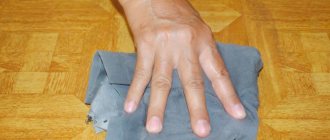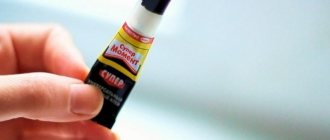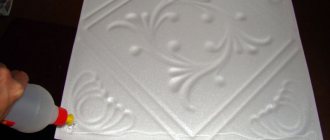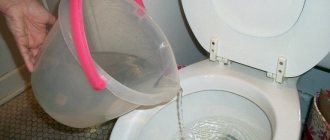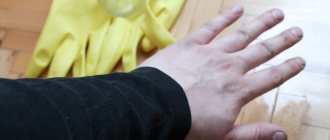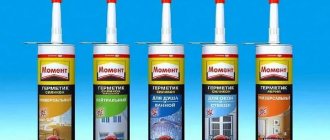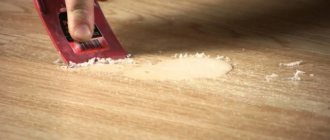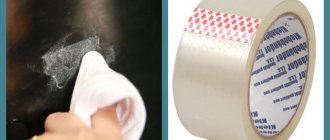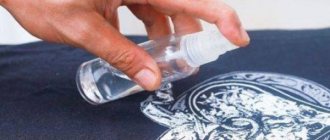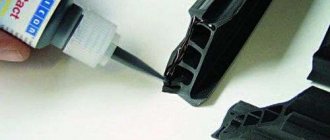Removing stubborn glue stains from various surfaces is not an easy task, especially if its composition contains only high-quality components. Natural or chemical substances can act as assistants. They will help dissolve the glue stain, which after all the manipulations will be easy to remove with a regular rag or sponge.
Solvent
The arsenal for fighting stubborn stains should include: water, alcohol, acetone, soda, vinegar, oil. Depending on the nature of the contamination, these products are combined with each other or one of them is used.
Several effective ways to remove PVA glue from clothes
PVA glue is a reliable assistant that is used in a wide range: from children's creativity to construction.
The polyvinyl acetate composition gives good results when gluing various surfaces, so getting it on the fabric can lead to damage to the item.
To effectively deal with unwanted traces, you can use home recipes or use special products.
In this article we will tell you how to remove PVA glue from clothes at home.
Main types of compositions
Depending on the purpose, PVA glue is divided into the following types:
- stationery - for paper and cardboard;
- household or wallpaper - mainly used for gluing paper materials to cement and wood surfaces;
- construction - for materials based on fiberglass, vinyl and paper, can serve as an additive to primer compositions, which increases the technological properties and adhesion of subsequently applied materials (putty, plaster and dry building mixtures);
- super M - for products made of vapor-permeable materials, ceramics, porcelain, fabric, glass, leather, also used when installing various floor materials;
- extra - wood, plywood, building mesh, wallpaper (cork, vinyl, paper, fiberglass), serpyanka, can be used as an additive to increase strength;
- universal - for gluing paper and decorative laminated paper to products made of wood, glass, metal.
Is it possible to dilute PVA glue with water?
PVA should be diluted with warm water, since solvents negatively affect the technical characteristics and destroy its structure. Mixing is carried out as intensively as possible.
In case of strong thickening - a crust or dry flakes have formed on the surface - the impurities contained are removed from the solution. Clumps with a jelly consistency do not need to be removed - they will dissolve during stirring.
Dry mixtures are diluted in a ratio that should be indicated in the manufacturer's recommendations for the use of a particular solution.
Adhesive compositions that cannot be diluted with water are in most cases sold already diluted and in appropriate containers, since they have a strong and unpleasant odor and are also prone to rapid hardening. Such substances may not be diluted at all or only with the use of special solvents.
How to remove it at home?
If the PVA stain was not noticed immediately, you will have to use more serious methods to eliminate it. In the case where the trace of glue remains voluminous, you must first try to remove the bulk of the frozen substance.
If the fabric cannot withstand such treatment, then it is better to use soda:
It is recommended to take into account the brand of glue, since its construction varieties have greater durability and better adhesive ability compared to stationery ones.
Vinegar
Table vinegar will help to deal with old glue stains. This method can be helpful for cleaning thin fabrics, such as chiffon.
Application:
Alcohol
Before removing traces of glue, the item should be turned inside out. Operating procedure:
The use of alcohol is indicated for linen, cotton, and denim fabrics. Read about removing glue stains from jeans here.
Exposure to high temperatures helps remove the adhesive from the material. It is convenient to use a regular iron for this.
Work order:
Ammonia
Ammonia as a cleaner can be used either independently or in addition to another type of treatment, for example, steam.
Moisten the sponge with ammonia and achieve good hydration of the stain by applying it for a quarter of an hour . The remaining glue is removed, and the item is washed.
Using ammonia will help in cases where other means cannot be used - for example, when cleaning suede.
Freezing
The use of low temperatures is a fairly effective approach. You can use it if the soiled item is small and can fit in the freezer compartment of the refrigerator.
For this:
Steam exposure can be effective. High temperatures can also disrupt the structure of the adhesive and contribute to its destruction.
Removing stains:
When using steam, be careful not to get burned.
Varieties
PVA glue has remarkable qualities, which have created a positive reputation for it. But when using it, you need to remember that there are different types of this product. For example, office glue will not adhere to wood. Therefore, it is necessary to take into account the planned work and purchase the appropriate version of the product.
- Household (wallpaper). Designed for working with paper and paper wallpaper that needs to be glued to one or another surface - plastered, wooden, cement. It has a white color, which may contain yellowness. If the product is old, then the yellow becomes more pronounced. The smell is not strong. If, when you press the tube, only a certain amount of yellow or clear liquid pours out, then the product has lost its quality. The packaging should be thrown away.
- Clerical. Used to glue paper and cardboard. It has a fairly liquid consistency, white or beige color. It has low resistance to moisture and frost.
- Universal (MB). A viscous substance is white, sometimes with a yellowish tint. Adheses well to slippery surfaces. Most often it is used when working with paper, glass, and leather. Its technical characteristics make it possible to glue even some floor and wall coverings.
- "Super M". Its use makes sense if there is a need to glue vapor-permeable materials while maintaining high quality seams, and there are no special requirements for gluing technology. This type of PVA can be used when installing flooring and ceramic tiles. It can be used to connect fabric, leather, glass, porcelain. The product is frost-resistant.
- D3. Effective when working with wood and plywood.
- Building. It is rarely used in its pure form, except for gluing certain types of wallpaper. More often it is added to mortars for bricklaying and some other materials to improve their quality.
Top 3 special tools
In some situations, homemade recipes may not help . Then special drugs will come to the rescue.
Grass Antigraffiti
This product, Grass Antigraffiti, is an effective product for removing traces of glue, chewing gum, tape, etc.
It contains:
The cost of a 0.6 liter bottle. with a sprayer - about 300 rubles. The drug is also available in 5 kg canisters.
Advantages:
Flaws:
Duty Universal
The drug is a professional remover of glue and adhesive base of stickers, tape, etc. The product has an enhanced effect and is produced in Russia.
Compound:
Advantages:
Minuses:
Mellerud
How to use:
The product has good reviews. Its disadvantage is the high cost for a small volume and the need in some cases to repeat the processing.
Modern products and concentrates
Modern chemicals that can cope with the task quickly, without spoiling the quality of the item, will help remove an untidy glue stain.
PVA glue is an emulsion of polyvinyl acetate in water. It is supplied for cleaning, so there are no unnecessary difficulties in the process. However, this only applies to a fresh glue stain: just moisten it generously with water, rub it, and the stain will immediately come off. But you will have to work hard on the dried one.
Effective means are: medical alcohol, vinegar, acetone, gasoline, turpentine, ammonia, baking soda, petroleum jelly, white spirit, Dimexide. The following oils performed well: baby oil and sunflower oil.
"Dimexide" is not only an anti-inflammatory drug that can be bought at any pharmacy, but also a good solvent, and it is inexpensive.
You need to soak a napkin or cotton pad with the solution, apply it to the stain, and leave it to soak for half an hour. After time has passed, remove the residue with a damp cloth and, if necessary, rinse with water. We must remember: “Dimexide” is an aggressive substance, so you need to wear rubber gloves when working with it, and you should avoid getting drops into your eyes, mouth or open wounds. Another caveat: this solvent can damage painted items, so it should be used carefully on clothing. This is especially true for denim.
Useful tips
Regardless of what kind of clothing was stained with glue during work, the initial steps for removing stains will be the same for all types of fabric.
- Immediately after glue gets on the fabric, try to wipe it off with a napkin or rag. The dried substance will be much more difficult to remove.
- First, blot the trace of the substance with a dry cloth. This must be done so that the remaining glue is absorbed into the fabric or paper. Next, use a kitchen knife to try to remove any remaining glue from the fabric.
- Remember, before using aggressive cleaning products, be sure to do a test on an inconspicuous area of clothing. This way you can make sure that the substance will not spoil the fabric and the clothes will not lose their normal appearance.
- When using aggressive chemicals, wear gloves on your hands and be careful not to get harmful substances into your eyes. If the substance gets into your eyes, rinse them immediately under running water.
- When using volatile mixtures, open the window and turn on the hood. Never work with volatile mixtures indoors, as you risk being poisoned by toxic fumes.
- When working with glue, wear an apron and sleeves, this way you can protect your clothes from getting glue.
The nuances of removing PVA glue
From glass
Ammonia and purified gasoline perfectly remove contaminants from the glass surface. You need to moisten the sponge, treat the contaminated area, then wipe with a damp cloth. At the end you can use polish.
Another option is an iron with a steam function. Direct the hot jet onto the dried stain, hold until the mixture completely softens, remove the residue with a damp sponge.
From furniture and clothes
To remove excess glue from furniture, you need to prepare a cotton swab, a solvent (vinegar, alcohol, vodka, nail polish remover), water, a stiff brush and soap (laundry or baby soap). You need to moisten the stain with water, wipe with the existing product, then blot with a damp sponge and wash with clean warm water and soap. The glue turns into a thin film and comes off easily.
Before using this or that product, you need to apply it to an inconspicuous place or the wrong side of the fabric to find out how the material will react to the substance.
From plastic
PVA forms a flat spot on the plastic surface, which can be easily removed mechanically. You need to lift its edges with a pin or needle, then remove it, being careful not to scratch the surface. If you cannot do the work carefully, it is recommended to sprinkle the stain with baking soda and lightly rub with a soft sponge. Remaining glue is removed with regular tape - tiny lumps of glue easily stick to the adhesive tape.
You can mix vinegar, baking soda and warm water in equal portions, apply it to the plastic, and then wipe it off.
If drops of glue get on the monitor, don’t panic. You need to dilute a little baby soap in warm water, moisten a soft cloth (cotton or linen) in it, then rinse the screen from bottom to top. Do not press too hard to avoid damaging the equipment.
